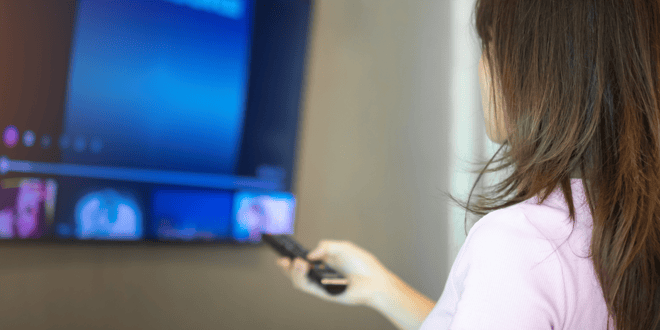Have you ever wondered why digital media analytics are dominated by metrics such as page views, clicks, and so on? To answer this question, we have to look far beyond the advent of the internet. Ever since mass media came into being, different structures have been created to measure content consumption via audience measurement.
Over decades, a variety of techniques emerged to measure radio, newspaper, TV, outdoor advertising, and now digital media audiences. These were aimed at developing measurement tools and methods that make it possible to understand consumers more broadly and with greater complexity in order to optimize advertising campaigns.
Below, let’s take a look at the importance audience measurement holds today and how we’ve reached revolutionary technologies, such as audio matching.
Origins of audience measurement
In the 1930s, radio broadcasting was still a novel invention. With more questions than answers about their reach, radio stations began hiring market research companies with the purpose of learning about their audience’s composition at the time.
But only two decades later, television would become the dominant media. While newspapers focused on measuring copies circulated and radio stations concentrated on the number of listeners, TV stations ended up selecting the number of viewers as their main unit of measurement.
Later on, online audience measurement would arrive, using a basic metric employed in traditional media as a reference: audience size.
The advent of online audience measurement
Online measurement of audience size uses a different set of metrics and indicators. Unique visitors and page views continue to be two commonly used audience size metrics. However, despite the apparent simplicity of these measures, defining and implementing them has not been uniform.
For example, the panel-based audience measurement offered by companies such as comScore and Nielsen is based on information provided by a metering software. This software is installed on the computers of a sample of internet users. Nevertheless, it is not the only way to measure audiences.
In addition, some audiences are monitored using servers. This metric relies on information reported from a website to determine visitor traffic and behavior.
The importance of audience measurement in market research
Marketers, advertisers, brands on social media, and, in general, specialists in the sector rely on audience measurement data since it makes it possible for them to establish their KPIs and maximize their return on investment (ROI).
As a result, accurate audience measurement is absolutely critical in modern brand marketing. It is the starting point for evaluating people’s attitudinal and behavioral effects related to a delivered message.
By having different media, which in turn produce different types of data, we are able to learn about new audience behaviors. Consequently, when we have the right tools, we can find out campaigns’ real impact on people.
So, what are research agencies and brands doing to obtain refined data each time they measure an audience? They skillfully use and analyze a great variety of tools, looking for innovative technologies that increasingly collect a greater amount of high-quality data (beyond traditional data collection methods) to be able to understand consumers in a much deeper way.
Tools that are changing audience measurement
Currently, consumer purchases take place online or at physical points of sale. Sometimes, they are even made in both places at the same time. For this reason, understanding an audience goes beyond conducting a survey and tabulating their responses.
At Netquest, this is something we understood very well. Therefore, we decided to partner with Fluzo to develop a powerful tool that uses panelists and their mobile devices to innovatively capture exposure to campaigns: audio matching.
How does audio matching work, and how is it changing audience measurement?
In essence, we are talking about an omnipresent application on panelists’ smartphones. Using audio recognition technology, audio matching has the capacity to determine which advertisements a consumer listens to, including when they are on the street or in their own home, by using ambient sound.
This is done regardless of the type of device broadcasting the content: a TV, radio, tablet, laptop, etc.
The following are some of the features that make this solution stand out for audience measurement:
- The technology captures advertising campaigns a consumer is exposed to 24/7, whether on TV, radio, or digital media.
- It enables comparative analysis among media, broadening the analytical power of the results.
- It enables assessing the reach among channels and media by measuring knowledge, appeal, and effectiveness within target audiences.
- It fits into quantitative research, broadening and deepening the level of understanding of advertisements. In this way, campaigns’ impact and effectiveness are captured in a single audience measurement.
- It enables greater ROI compared to traditional methods such as installing meters.

Advantages of measuring audiences with audio matching
According to a company’s type of business and commercial objectives, measuring an audience with audio matching can help in many ways. Specifically, here are some benefits:
Increased accuracy
Learning about the audience helps target the right group of people at the right time. This analysis tool helps identify what kind of consumers may be more interested in what brands are advertising.
High-cost efficiency
It is well-known that advertising tends to be very expensive. For this reason, marketing specialists cannot afford to launch and fall short. With the right audience analysis enabled by audio matching, it’s possible to have access to potential clients’ interests. Then, brands can promote their products and services with content that makes an impact, optimizing their budgets.
Choosing the right media mix
One of the benefits of this kind of analysis is being able to analyze the media consumed by the target audience. This enables detecting which type of media are the most preferred.
Reasons for research agencies to incorporate audio matching
Consider the following: Does a consumer who is surveyed provide the requested information with full awareness? The truth is that we can’t always trust the veracity of the responses given in a qualitative interview, since it’s common for these responses to be undermined by respondents’ memory or misunderstandings, among other aspects.
This is why, at Netquest, we advise incorporating this solution, which involves passive data. Audio matching offers a broader and more powerful view that enables understanding an advertising campaign’s effectiveness far beyond the declared data.
Using an analytical dashboard, it is possible to find out details about who saw the ad, what channels they were exposed to, and how many times.
Another great opportunity is the possibility of analyzing exposed and non-exposed consumers in a single panel, which means obtaining a single supply of reliable results on exposure to campaigns through multiple platforms.
To wrap up, we must understand audience measurement as a comprehensive operation with multiple variables to yield high-quality data. To go a step further, a measurement partner should comply with the rules established by ISO (the International Organization for Standardization). With Netquest as your data provider, you’ll have this guarantee.
Thanks to the ISO 20252 standard stamp of approval, your market research will be of the highest quality. In addition, you’ll be increasingly incorporating these sought-after technologies to successfully measure audiences. In turn, you’ll expand your analytical power and increase your competitiveness in an increasingly specialized and dynamic market. Contact us and find out how we can boost your business.




